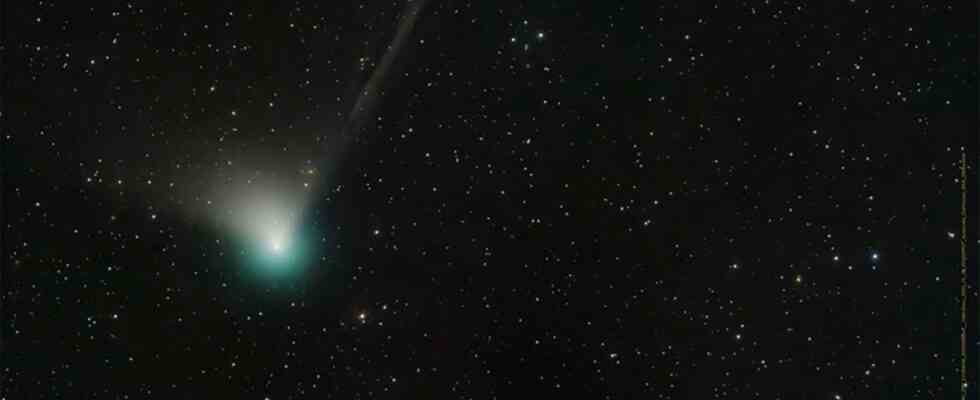It’s a special celestial event for people to see with the naked eyes over the next few weeks. Comet C/2022 E3 is scheduled to reach its closest point on February 1st. When he last came near the earth 50,000 years ago, Neanderthals were still living in Europe.
If you know where, observers can see it earlier. The most important questions and answers about comet sighting:
When is the comet best seen?
At the February 1st Comet C/2022 E3 (ZTF) has reached its closest distance to Earth. It flies by at a distance of around 42 million kilometers. That’s almost a third of the distance from Earth to the sun. From mid-January you can see the comet with binoculars or a telescope. It is getting brighter every day and should be visible unaided from around January 24th to February 6th – provided the weather cooperates.
Also good to know: There is a new moon on January 20th and February 21st, so the sky is darker at night.
Where can you see the comet?
Where the comet is at the moment depends on the observation location, the date and the time. Since the beginning of January, the Schweifstern in Munich has been best seen from midnight or in the early morning hours before dusk. It is there first very high in the north-east and later in the north, then it almost reaches the zenith vertically above Germany.
calculationfrom ARDalpha According to it, the comet flies through the constellations “Dragon”, “Little Dipper” (“Little Bear”) and “Giraffe” between January and February. Between the January 15th and February 6th the comet is so close to the north celestial pole that it stays high in the sky all night.
If you can’t find the comet as a layman, you shouldn’t be disappointed. Sven Melchert, chairman of the Sternfreunde, assumes that the comet will only be seen immediately by those who have experience in observing the sky and have tools such as telescopes or binoculars.
How bright will the tail star get?
The comet is estimated to reach an apparent magnitude of 5.4. This roughly corresponds to the limit of visibility for the naked eye. Some experts go loud ARDAlpha assume that it could shine even at 4.5 mag.
In binoculars, the comet appears as a muddy patch, shimmering greenish.
Why is the comet called C/2022 E3 (ZTF)?
The celestial body got its name because it was first seen by a program called the Zwicky Transient Facility from an observatory in the United States last year.
According to the German Aerospace Center (DLR), it is around one kilometer in size, but currently has a coma measuring around 50,000 kilometers, a kind of particle shell. This occurs when the comet approaches the sun and heats up, causing particles to break loose from its ice and migrate into the tail.
what is a comet
Coming from the extreme and frigid edge of the solar system, comets are celestial bodies that were not consumed in planet formation. According to the DLR, they consist of dust grains, organic molecules and, because of their low temperature, frozen gases. The high proportion of volatile matter distinguishes them from asteroids.
They are sometimes pushed out of their original orbit by gravity or collisions and then end up close to the sun or the earth. Most recently, comets C/2021 A1 Leonard and C/2020 F3 Neowise flew past Earth.

